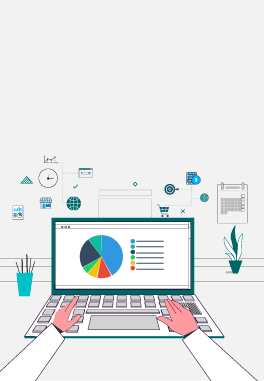Estimated reading time: 7 minutes
Did you know that you need to know market dynamics while setting up your prices?
Learning market dynamics is required to survive in the ecommerce world. This is because you can have better control when you know the changing dynamics and react to them as fast as you can. This will help you to compete with your rivals in an intelligent way. After that, you can consider adopting those into your business strategy so that you can set optimal prices.
Today we will discover various market dynamics you need to know in Ecommerce while pricing your products optimally.
Let’s first explain what optimal pricing is, then we will go over the market dynamics in Ecommerce.
What are Market Dynamics?
Market dynamics is mainly focused in the global economy but it can be used nowadays by online retailers.
For definition market dynamics are the forces that impact pricing and the behaviors of both consumers and manufacturers. These forces create pricing signals that result from a change in supply & demand. The fundamental concept of economics is the relationship between supply-side & demand-side which are two main streams that uplift the economy. Therefore we can say those market dynamics consider how price patterns result and change from the ongoing shifts.
Market dynamics determine:
- When price increases how do customers react
- Changes in the supply & demand relationship affect the other product and consumer groups
- Supplier’s reaction to the change in demand
Since market dynamics change over time, learning what they are and how they change can be beneficial for many businesses.
Optimal Pricing
The optimal price is a price point where the total profit from the sales is at the maximum level. It’s also called profit-maximizing price.
It’s a price point where you are happy to sell and your customers are happy to buy. But the optimal price can change most of the time since prices in Ecommerce change very rapidly.
How can you find it? Well, market dynamics have a huge effect on prices since it affects the demand and supply sides of the economy.
But there are various ways to find the optimal price. You can consider the following:
The perceived value. You don’t necessarily have to know what the actual value of that product is but it’s essential to find the value that is perceived by your target audience. Since Ecommerce dynamics are changing rapidly so do your customers shopping habits as well!
Your competitors’ pricing is another important factor. What are your competitors’ charges? Do you remember the last time you checked it? You need to track your competitors’ prices consistently to understand their strategy behind. You can leave money on the table and lose many of your sales if you price your products without knowing your competitors’ prices.
These two factors are important while finding the optimal price.
Now, let’s identify the market dynamics you need to learn and adapt to your business while pricing your products.
#1 Learn Your Customers’ Shopping Habits
Customers affect the market. If the demand is low you won’t be able to sell your products, right? To achieve an increased number of sales, you need to define your customer segment. Then, understand their shopping behavior.
At what time of the day do they shop from your store? Or do they just look at your products without buying? What do they purchase? Monitor their actions and observe if there are some changes in their shopping behaviors from time to time.
Since online shopping is increasing day by day, customers are looking for better experiences. To be more clear let’s see some stats: Total retail sales for the second quarter of 2022 were estimated at $1,778.6 billion, an increase of 1.9 percent (±0.4%) from the first quarter of 2022.
Don’t get scared by those numbers. They show that online shopping is offering great value in terms of sales and profit margins. You should consider more about learning your customers’ shopping habits and try to make shopping an easier and more enjoyable experience for them!
Adopt a Personalized Pricing Strategy
There is no secret that customers will pay more for what’s valuable to them. The secret is finding out which customers value your products or services. That is when pricing strategy works: Find a sweet spot where your customers are happy to pay and you make a profit.
To adopt a personalized pricing strategy you can take a detailed look at your customers. Everything you know about their needs, revenue, desires and behaviors. Then you will use that information to offer a price you think will end up in a purchase.
Remember that an effective personalized pricing strategy offers loyal customers greater deals than customers without any sales history.
#2 Track Your Competitors’ Actions
Always look out for competition in your market. Determine whether it’s strong or weak. You should always do your market research and track your competitors’ actions. Understanding the strategy behind their actions can give you a competitive edge.
Track Your Competitors’ Prices
You need the pricing information of your competitors. It can give you an insight while pricing your products. There are two different competitor tracking methods.
Manual Tracking: If you sell a very limited number of products manual tracking can work for you. Imagine that it takes 30 seconds to visit your competitors’ websites, look at their product prices and record it in a spreadsheet. If you sell 50 products on your website and you have 10 competitors, it will take 4 hours.
But considering how fastly prices are changing in ecommerce your data can become obsolete whether it becomes useful data.
Price Tracking Software: Working with price tracking software is another option. It can be more effective than manual tracking because you can save your time and also have clear and up-to-date data which is more valuable and useful for your pricing.
#3 Offer High Quality Product & Service
The product or service you offer is one of the major criteria that affect the market dynamics. How good your product is or the quality of your service matters. This is because you can lose many of your customers due to poor-quality products. The products you offer influence your brand image and it can be your way to success if you do it correctly.
Your purpose should be to create value by addressing the needs of your customers. Find their pain point and offer your product or service as a solution.
#4 Adopt Pricing Strategy for Global Financial Uncertainty
The economic situation of your market is crucial. This is because you have to determine prices based on the financial situation of your market. Why? You cannot sell your products if your customers don’t find your prices reasonable.
Think about the economic crisis we’re facing today. Everyone in the world, from politicians to online shoppers are facing inflation. As an online merchant, you need to change your prices, right?
Adopt pricing strategies during the inflationary period!
Pricing Strategies During Inflation
To deal with inflation effectively you need to set up a pricing strategy. How?
Monitor your competitors’ prices. See your competitors’ price moves and take action if necessary.
Since you have lots of competitors’ in ecommerce working with dynamic pricing software can be helpful. Having competitive analytics can help you save profit margins and have a better chance to beat your rivals!
Price is a crucial element for customers. In today’s world of ecommerce consumers are willing to check online prices constantly and try to get the best deal when they’re making a purchase. To deal with that effectively, pricing your products by knowing what your competitors are charging can be useful.
Customers are willing to accept when they are informed with rational reasons. Explain the reason why you increase prices; you do it to maintain product quality and/or increased material cost.
Don’t blame inflation for higher prices. Inform your customers about your product’s features that you haven’t highlighted before.
Most importantly, don’t apologize for the high prices. Be polite and describe the conditions. Higher prices are good for you and for your business, see the benefit behind it.
Takeaways
- Market dynamics are constantly changing. You need to adjust your pricing structure and test your prices to find the optimal price.
- Your target audience has a huge effect while finding the optimal price for your products. Consider more about learning your customers’ shopping habits and test prices that can end up with the purchase.
- Always look out for the competition in the market. Track your competitors’ prices and use that information while pricing your products.
- When there is financial uncertainty, work with pricing strategies that can work for that period.



Leave a Reply